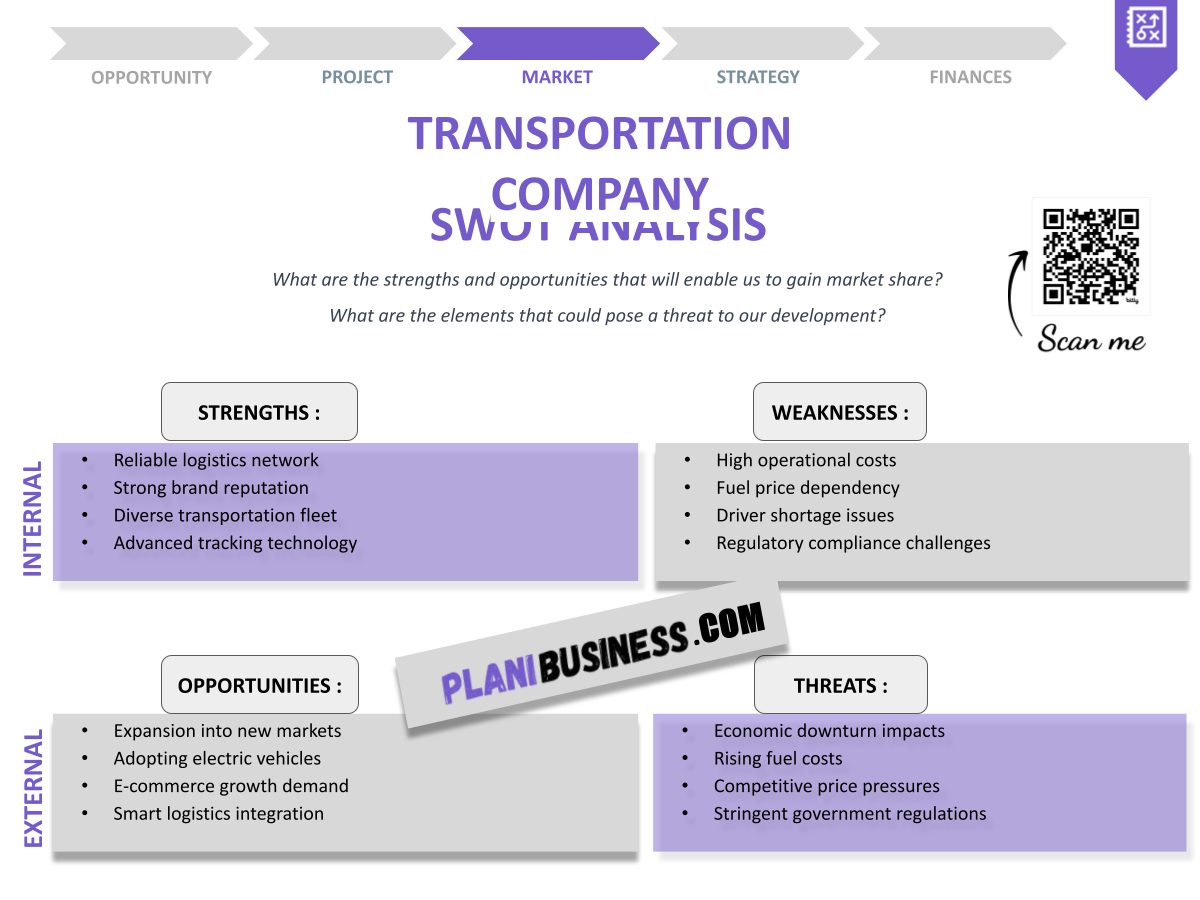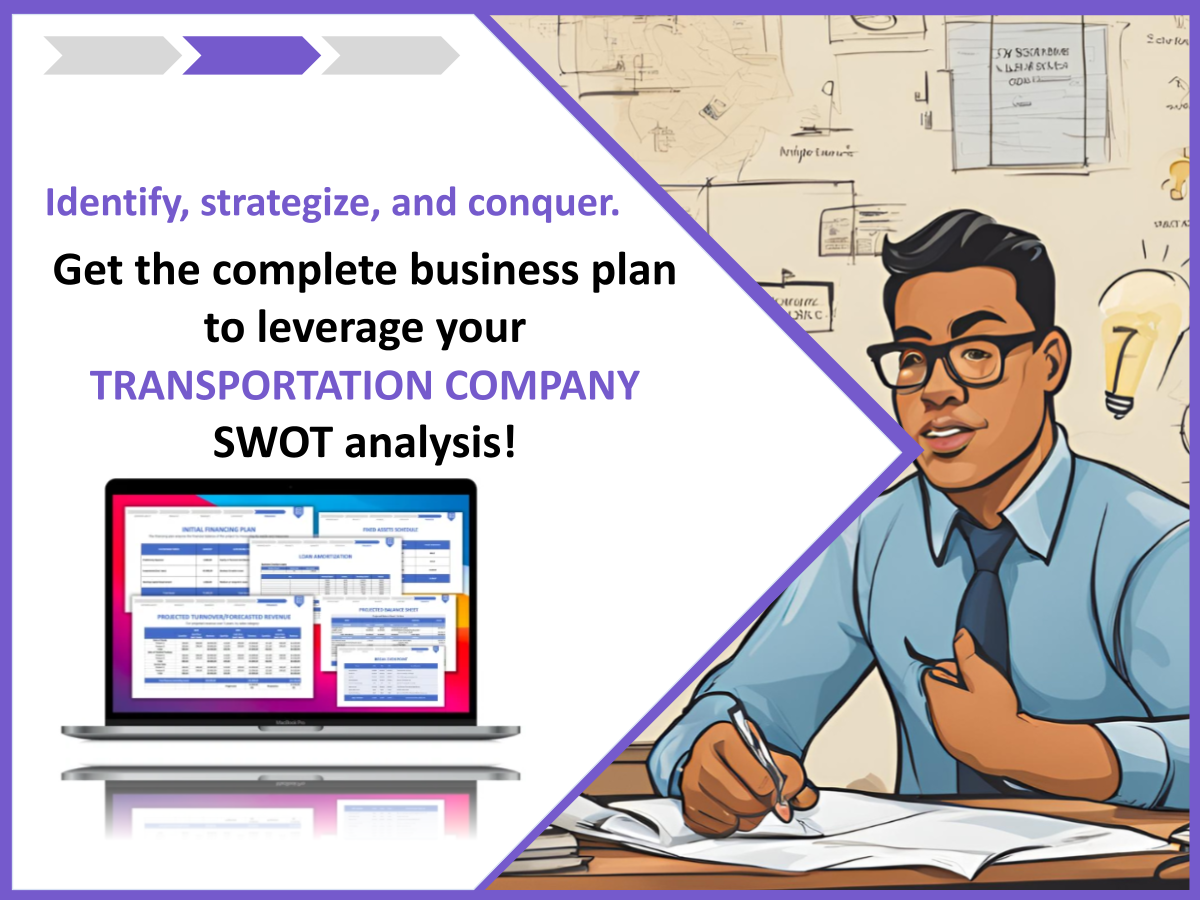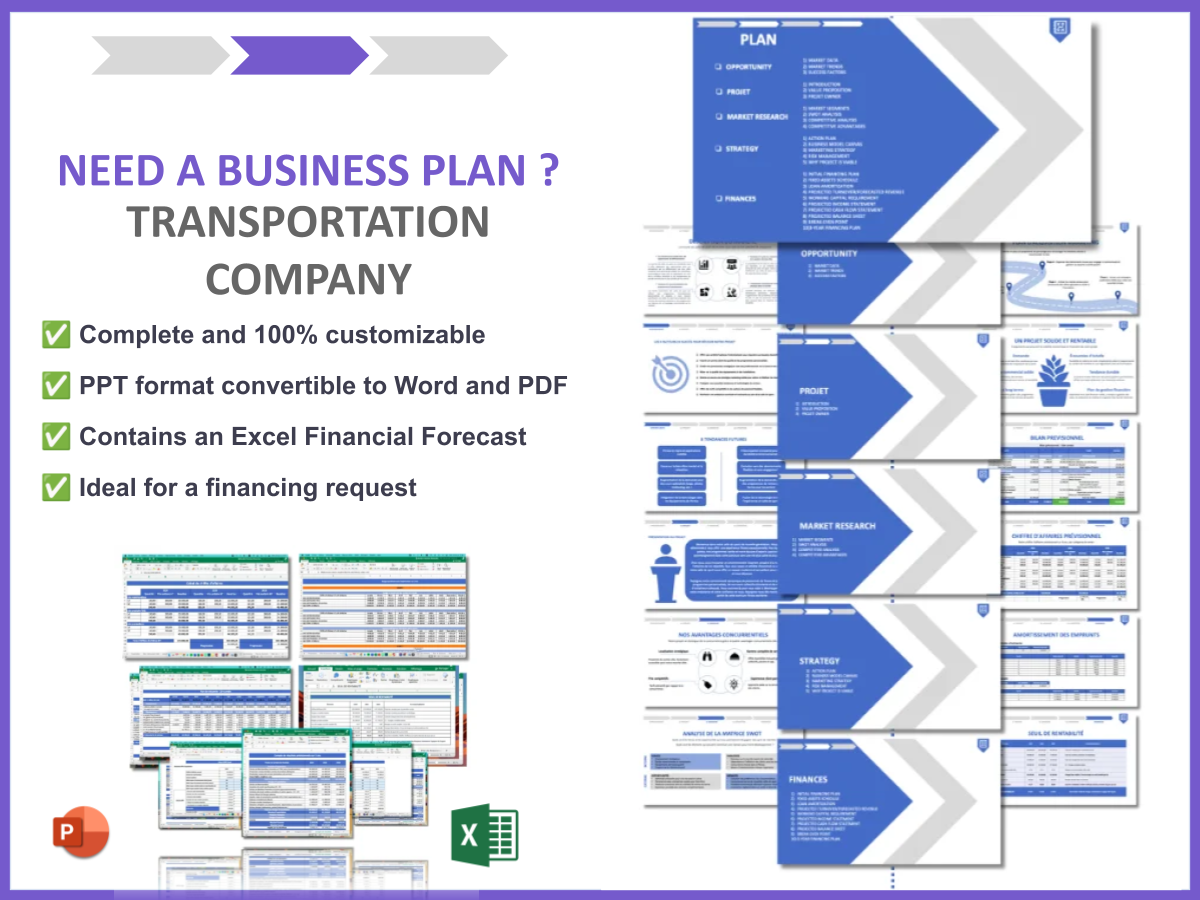Why Should You Have a SWOT Analysis for Your Transportation Company?
Are you thinking about how to improve your transportation business? You’re not alone! Many companies in the transportation sector overlook a crucial tool that can elevate their strategy and success: the SWOT analysis. Did you know that nearly 70% of businesses that perform regular SWOT analyses report improved decision-making? This statistic highlights the significant impact that understanding your Strengths, Weaknesses, Opportunities, and Threats can have on your company’s trajectory.
A SWOT analysis is a strategic planning technique that helps businesses identify internal and external factors that could impact their success. By evaluating these elements, you can create a clearer path for your company’s growth and sustainability.
10 Key Takeaways:
- Understand the importance of SWOT analysis.
- Identify internal strengths and weaknesses.
- Recognize external opportunities and threats.
- Improve decision-making processes.
- Enhance strategic planning.
- Gain competitive advantage.
- Align resources effectively.
- Foster innovation.
- Strengthen market positioning.
- Increase overall business performance.
How Do You Write a SWOT Analysis for Your Transportation Company?
Writing a SWOT analysis is straightforward if you follow a structured approach. Here’s how you can break it down:
Strengths
Start by listing your transportation company’s strengths. What do you excel at? This could be anything from a loyal customer base to advanced technology.
Consider your operational efficiencies. Do you have a reliable fleet or exceptional staff? Highlight these attributes.
Think about your brand reputation. A strong brand can set you apart from competitors.
Include financial stability as a strength. A solid financial foundation allows for growth and resilience.
Weaknesses
Identify areas where your company may be lagging. This could be outdated technology or limited service areas.
Evaluate your workforce. Are there skill gaps that need addressing?
Consider your financial weaknesses. High debt levels can restrict growth.
Reflect on customer feedback. Are there recurring complaints that need resolution?
Opportunities
Look for trends in the transportation industry. Are there emerging markets or services you could tap into?
Consider partnerships with other companies. Collaborations can expand your reach.
Evaluate advancements in technology. Can you adopt new tools to improve efficiency?
Think about changing regulations that could benefit your operations.
Threats
Identify external factors that could harm your business. This might include increasing fuel prices.
Evaluate the competition. Are new entrants threatening your market share?
Consider economic downturns. How might a recession impact your operations?
Reflect on regulatory changes that could pose challenges.
SWOT Example N°1 for XYZ Transportation
Let’s look at a real-world example of a transportation company utilizing a SWOT analysis effectively.
| SWOT | Analysis |
|---|---|
| Strengths | Established brand, loyal customer base |
| Weaknesses | Limited geographical coverage |
| Opportunities | Growing e-commerce delivery demand |
| Threats | Rising fuel costs |
Resume-Liste:
- Strong brand presence.
- Loyal customers.
- Expanding market for delivery services.
- Rising operational costs.
This example shows how XYZ Transportation uses its brand strength to capitalize on growing e-commerce demands. However, it also highlights the need to address geographic limitations to stay competitive.
SWOT Example N°2 for ABC Logistics
Here’s another example to consider.
| SWOT | Analysis |
|---|---|
| Strengths | Advanced tracking technology |
| Weaknesses | High employee turnover |
| Opportunities | Partnerships with tech firms |
| Threats | Increased competition |
Resume-Liste:
- Cutting-edge technology.
- High turnover rates.
- Potential partnerships.
- Competitive market pressures.
ABC Logistics benefits from its technology but must address workforce stability to maintain service quality amidst rising competition.
SWOT Example N°3 for DEF Freight Services
Analyzing DEF Freight Services gives us further insight into how a transportation company can leverage a SWOT analysis.
| SWOT | Analysis |
|---|---|
| Strengths | Experienced management team |
| Weaknesses | Limited fleet capacity |
| Opportunities | Expansion into new regions |
| Threats | Economic fluctuations |
Resume-Liste:
- Experienced leadership.
- Fleet limitations.
- Growth potential.
- Vulnerability to economic changes.
DEF Freight Services has the advantage of experienced management but needs to expand its fleet to seize growth opportunities in new regions.
SWOT Example N°4 for GHI Transport Solutions
Let’s analyze GHI Transport Solutions and see how they utilize a SWOT analysis.
| SWOT | Analysis |
|---|---|
| Strengths | Strong customer relationships |
| Weaknesses | Outdated software systems |
| Opportunities | Demand for green logistics |
| Threats | Regulatory changes |
Resume-Liste:
- Strong client ties.
- Software challenges.
- Green logistics potential.
- Regulatory risks.
GHI Transport Solutions excels in customer relations but must modernize its software to adapt to the rising demand for sustainable logistics solutions.
SWOT Example N°5 for JKL Delivery Services
Here’s an example from JKL Delivery Services, showcasing how they apply a SWOT analysis.
| SWOT | Analysis |
|---|---|
| Strengths | Fast delivery times |
| Weaknesses | High operational costs |
| Opportunities | Expansion into urban areas |
| Threats | New delivery startups |
Resume-Liste:
- Quick service.
- High costs.
- Urban expansion.
- Competitive threats.
JKL Delivery Services is known for its speed, but it needs to find ways to reduce costs to compete with emerging startups in urban areas.
SWOT Example N°6 for MNO Shipping Co.
MNO Shipping Co. provides another interesting case study on how to effectively use a SWOT analysis.
| SWOT | Analysis |
|---|---|
| Strengths | Diverse shipping options |
| Weaknesses | Slow response times |
| Opportunities | Global market expansion |
| Threats | Trade tariffs |
Resume-Liste:
- Variety of services.
- Response time issues.
- Growth potential.
- Tariff risks.
MNO Shipping Co. offers diverse services but needs to enhance its responsiveness to capitalize on global market opportunities, especially with tariffs in play.
SWOT Example N°7 for PQR Transport Corp.
Analyzing PQR Transport Corp. can provide valuable insights into how a transportation company utilizes a SWOT analysis.
| SWOT | Analysis |
|---|---|
| Strengths | Strong logistics network |
| Weaknesses | Limited marketing presence |
| Opportunities | Increasing online sales |
| Threats | Economic downturns |
Resume-Liste:
- Robust logistics.
- Marketing challenges.
- Online sales growth.
- Economic vulnerability.
PQR Transport Corp. has a solid logistics network but must enhance its marketing efforts to capture the growing online sales market while navigating potential economic downturns.
SWOT Example N°8 for STU Freight Services
Here’s another example with STU Freight Services, demonstrating their approach to a SWOT analysis.
| SWOT | Analysis |
|---|---|
| Strengths | Reliable delivery schedule |
| Weaknesses | Lack of technology |
| Opportunities | Demand for real-time tracking |
| Threats | Fuel price volatility |
Resume-Liste:
- Dependable service.
- Technology gaps.
- Tracking demand.
- Price volatility risks.
STU Freight Services is known for reliability but must adopt technology to meet the rising demand for real-time tracking, especially given fuel price uncertainties.
SWOT Example N°9 for VWX Transport Solutions
VWX Transport Solutions offers another unique perspective on how to effectively use a SWOT analysis.
| SWOT | Analysis |
|---|---|
| Strengths | Wide service range |
| Weaknesses | High employee turnover |
| Opportunities | Expansion into new markets |
| Threats | Increasing competition |
Resume-Liste:
- Broad service offerings.
- Turnover issues.
- Market expansion potential.
- Competitive landscape.
VWX Transport Solutions has a broad service range but needs to address employee turnover to effectively expand into new markets amidst rising competition.
SWOT Example N°10 for YZ Logistics
Finally, let’s examine YZ Logistics to see how they implement a SWOT analysis.
| SWOT | Analysis |
|---|---|
| Strengths | Innovative delivery methods |
| Weaknesses | Limited brand recognition |
| Opportunities | Growth in e-commerce |
| Threats | Fluctuating regulations |
Resume-Liste:
- Innovative approaches.
- Brand challenges.
- E-commerce growth.
- Regulatory hurdles.
YZ Logistics is pushing boundaries with innovation but needs to enhance brand recognition to fully leverage the e-commerce growth potential while navigating regulatory changes.
Conclusion
In conclusion, conducting a SWOT analysis for your transportation company is not just beneficial; it’s essential for strategic planning and growth. By understanding your strengths, weaknesses, opportunities, and threats, you can make informed decisions that propel your business forward. Don’t wait; start your SWOT analysis today and unlock the potential for success!
If you’re looking for a solid foundation to build your business, consider using a comprehensive business plan template for a Transportation Company. This resource can guide you through the essential steps of launching and managing your business.
Additionally, check out our articles on How to Begin a Transportation Company? and How to Create a Transportation Company Marketing Plan? With Example for more insights and strategies.
Frequently Asked Questions
1. What is a SWOT analysis?
A SWOT analysis is a strategic tool that helps businesses evaluate their strengths, weaknesses, opportunities, and threats to inform decision-making and planning.
2. Why is a SWOT analysis important for transportation companies?
It allows transportation businesses to identify key internal and external factors that can influence their success, enhancing strategic planning.
3. How often should I conduct a SWOT analysis?
It’s recommended to perform a SWOT analysis annually or whenever significant changes occur in the market or your business environment.
4. Can a SWOT analysis assist in strategic planning?
Yes, it provides valuable insights that can guide your strategic planning and resource allocation effectively.
5. What should I consider when identifying strengths?
Focus on what your company excels at, including unique resources, capabilities, and achievements that differentiate you from competitors.
6. How do I identify weaknesses in my transportation company?
Look for areas where your competition performs better or where customer feedback points out consistent issues.
7. What types of opportunities should I explore?
Consider emerging trends in the transportation industry, potential partnerships, and advancements in technology that can benefit your operations.
8. How can I recognize threats to my business?
Identify external factors such as competition, economic changes, and regulatory challenges that could negatively impact your business.
9. Is involving employees in the SWOT analysis beneficial?
Absolutely! Employee insights can offer a more comprehensive view of the company’s performance and areas for improvement.
10. Can I apply a SWOT analysis to other industries?
Yes, a SWOT analysis is a versatile tool that can be applied across various industries, including logistics, shipping, and freight services.







